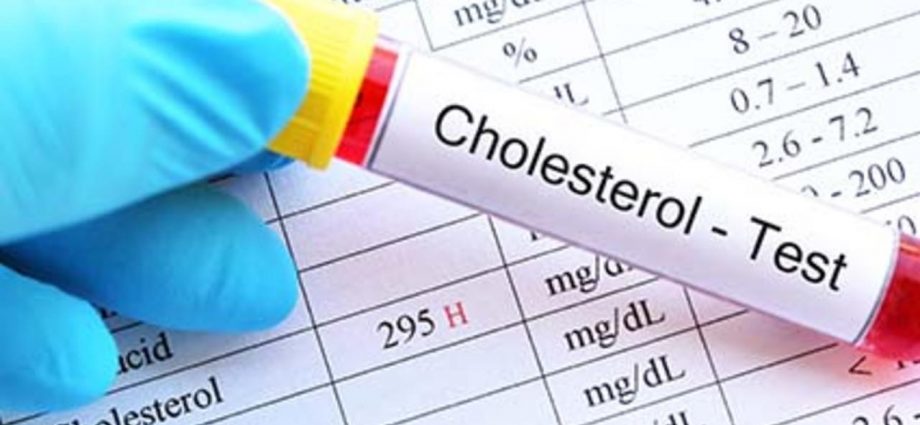WEDNESDAY, Nov. 1, 2023 (HealthDay News) — Despite progress in recent decades, too many Americans still have dangerously high LDL cholesterol levels, and about a quarter don’t even know it, new research finds.
That puts those people at risk for a longer span of artery clogging disease and increases their risk of heart attack and stroke, a new study says.
“We are not talking about mildly elevated levels in this particular study,” said co-author Dr. Salim Virani, vice provost in the Office of Research and Graduate Studies at Aga Khan University in Karachi, Pakistan. “We are talking about levels where you need to start treatment right away.”
Doctors may recommend diet and lifestyle changes for mildly elevated cholesterol levels, but someone with levels of 190 mg/dL or higher should also take cholesterol-lowering medication, experts say. A family history of heart disease further heightens the risk.
“In those people, treatment needs to be started right away. If you don’t, then there’s a very high probability that a lot of these patients will end up having heart attacks and strokes at a very young age,” Virani said.
Of course, you can only start treatment for high cholesterol if you know your cholesterol numbers are high.
“That’s why it’s absolutely imperative that everybody should get their cholesterol checked and they should know their numbers,” Virani said. A simple blood test is all you need.
Treatment with medication is recommended at 190 mg/dL and may be considered for those whose levels are 160 mg/dL to 189 mg/dL.
“As opposed to 45, 50 years ago when we really didn’t have a lot of medications, we right now have medications that are very safe, very efficacious. We have 45, 50 years’ worth of data. And if people take those medications, then we know that the risk of heart attack or stroke will go down,” Virani said.
The public should also be made aware that this is a progressive disease and getting care early is best, he said.
For their research, investigators used the U.S. National Health and Nutrition Examination Survey from 1999 to 2020. About 24,000 people were included.
They found that 1 in 17 U.S. adults still have LDL levels of 160 to 189 mg/dL and 1 in 48 adults have levels of 190 mg/dL or greater. Among those at the highest levels, 1 in 4 are unaware and untreated. This was the case for an even higher proportion of people with levels of 160 to 189 mg/dL.
Being unaware and untreated for high cholesterol disproportionately affected Black, Hispanic and poorer people. It was also more common in younger adults, men, those with lower education levels and those without health insurance, researchers found.
Lack of awareness may be due to difficulties accessing primary care. But there’s also a lack of consensus on screening recommendations, insufficient emphasis on LDL cholesterol as a quality measure and, in some cases, hesitance to treat asymptomatic people, according to the study.
Statin pills like Lipitor (atorvastatin) and Zocor (simvastatin) are probably the best-known drugs for lowering cholesterol, but there are others that can be taken by injection or orally.
“Clinicians have a lot of options to treat these patients and make sure that both their quality and quantity of life is not compromised just because of these high LDL cholesterol levels,” Virani said.
It’s not just death that is a concern. Having a heart attack at a young age can lead to years of disability and loss of quality of life, Virani said.
“This is a very important study highlighting both racial and ethnic, but also socioeconomic differences in terms of awareness and treatment of patients with elevated LDL cholesterol,” said Dr. Janet Wei, a cardiologist in the Smidt Heart Institute at Cedars-Sinai in Los Angeles.
Younger adults are probably not thinking about heart disease being the No. 1 killer of men and women, said Wei, who wasn’t part of the study.
“We probably need to try to get our younger patients to see their primary physicians,” she added.
However, it’s likely that some younger people don’t have primary care doctors. Men may rely on urgent care, while women will often get primary care from their ob-gyn, Wei said.
“Cholesterol-lowering medication has been shown to decrease this vulnerable population’s risk for heart attacks and strokes,” Wei said.
These medications slow down the progression of cholesterol plaque in the arteries that can impede blood flow and lead to heart attack, she noted.
Wei said more education is needed to boost screening. “If we empower patients on a community level just to seek their numbers, get to know their numbers, I certainly think that we can make some headway,” she added.
It would also help to have pediatricians identify those who are at higher risk as older teens or young adults before they graduate from their care, Wei said.
The study findings were published as a research letter Nov. 1 in JAMA Cardiology.
More information
The U.S. Centers for Disease Control and Prevention has more on cholesterol.
SOURCES: Salim Virani, MD, PhD, vice provost, Office of Research and Graduate Studies, Aga Khan University, Karachi, Pakistan; Janet Wei, MD, cardiologist, Smidt Heart Institute, Cedars-Sinai, Los Angeles; JAMA Cardiology, Nov. 1, 2023Text here
Copyright © 2024 HealthDay. All rights reserved.

